
This is part two of my series on the shipment of lithium batteries by ground in Canada and the United States. In this blog, we will now focus on the United States and the utilization of title 49 Code of Federal Regulations (CFR). For those who have read part one, you will notice that there are many similarities but, you will see the differences in marking and labeling.
Here are some key terms that you must know to better understand how to ship lithium batteries.
- What is a Cell vs. Batteries?
Cells are a single unit, meanwhile, batteries are multiple cells connected in a series.
- What are Lithium-ion vs. lithium metal cells/batteries?
Lithium-ion is rechargeable while lithium metal is not. This is vital since the classification of lithium-ion is in watt-hour rating, meanwhile, metal batteries are in lithium content in grams.
- How can lithium batteries be shipped?
Alone, packed with, or contained in equipment. This is important because it will determine what UN number and proper shipping name you will be using.
The following shipping descriptions and special provisions (SP) are to be utilized when shipping lithium batteries or cells. I will give a brief summary of each SP.
Note the SP beginning with the letter “A” are to be utilized for air transport and won’t be covered in this blog.
Shipping descriptions and associated special provisions
Lithium-ion batteries:
- UN3480 Lithium-ion batteries, SP: 388, 422, A54, A100
- UN3481 Lithium-ion batteries contained in equipment, SP: 181, 388, 422, A54
- UN3481 Lithium-ion batteries packed with equipment, SP: 181, 388, 422, A54
Lithium metal batteries:
- UN3090 Lithium metal batteries, SP: 388, 422, A54
- UN3091 Lithium metal batteries contained in equipment, SP:181, 388, 422, A54, A101
- UN3091 Lithium metal batteries packed with equipment, SP: 181, 388, 422, A54
Special provisions summary
SP 181: is in reference to when a package contains a combination of lithium batteries contained in equipment and lithium batteries packed with equipment. It also layouts packaging, markings, and as well as documentation requirements.
SP 388: is in reference to mainly two topics:
- Design features of lithium ion and metal batteries and most importantly the battery must meet the UN Manual of Tests and Criteria, part III
- When such batteries are transported in accordance with § 173.185(c), the total lithium content of all lithium metal cells contained in the battery must not exceed 1.5 g and the total capacity of all lithium-ion cells contained in the battery must not exceed 10 Wh.
SP 422: When labeling and placarding is required, the following must be used
| Labels – § 172.447 | Placards – § 172.560 |
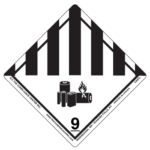 |
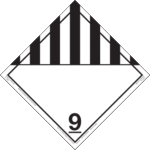 |
Packaging requirements of § 173.185
When it comes to packaging, we will focus on non-bulk
Packaging requirements must prevent short circuits or damage caused by shifting and must prevent accidental activation of the equipment.
Lithium cells/batteries shipped alone or with equipment:
When UN performance packing is to be used it must meet packaging group II levels but here are exceptions:
- UN performance packaging is not required for batteries that are contained in or packed with equipment as long as the equipment afforded equivalent protection. This doesn’t apply to loose spare batteries.
- Further provision is also given to batteries having a strong impact-resistant outer casing weighing more than 12 kg (26.5 pounds) in which case it can be placed on a pallet for example.
- The regulations also afford exceptions for smaller cells or batteries also known as low-power batteries. An example is cell phones and laptops etc. Here are the classification criteria:
-
- Lithium-ion – The Watt-hour (Wh) rating may not exceed 20 Wh for a cell or 100 Wh for a battery.
- Lithium metal – The lithium content may not exceed 1 g for a cell or 2 g for a battery.
Lithium batteries contained in or shipped with equipment are also exempt when quantities do not exceed 5 kg net weight. When they do, and/or if batteries are shipped by themselves, they must be marked with the following two examples of a shipment of UN 3480 Lithium-ion batteries:
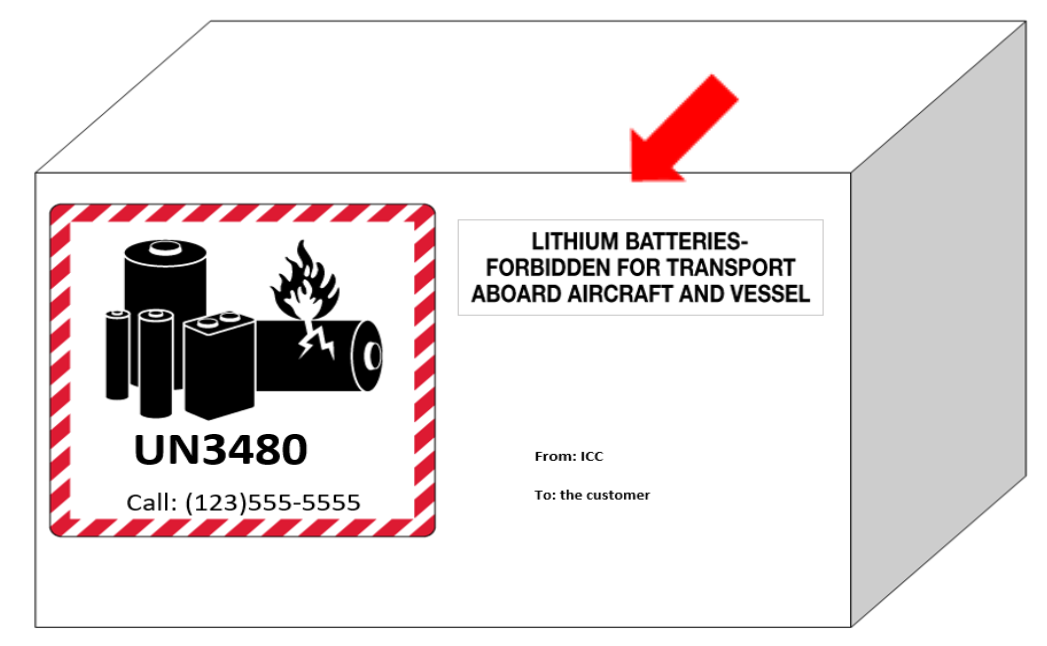 |
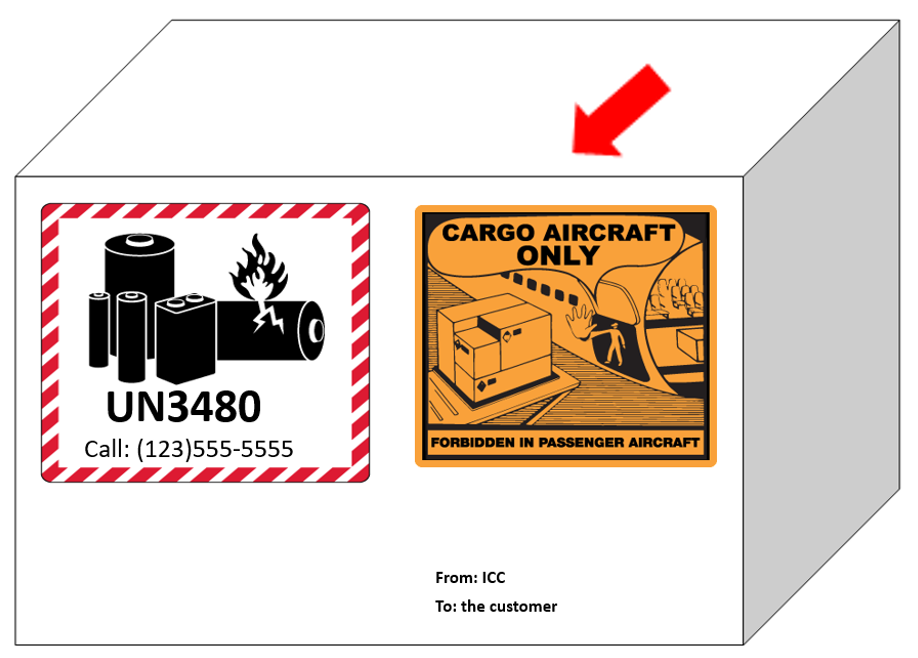 |
*Each package must not exceed 30 kg (66 pounds) gross weight if not packages with or contained in equipment
Another exception is for when only ground transportation is utilized the lithium content of the cell and battery may be increased to 5 g for a lithium metal cell, 25 g for a lithium metal battery, 60 Wh for a lithium-ion cell, or 300 Wh for a lithium-ion battery. The outer package that is provided is to be marked as the example below for a lithium-ion battery:

Fully regulated shipment when not meeting any exception will require you to use the Class 9 lithium battery label and the use of UN performance packaging.
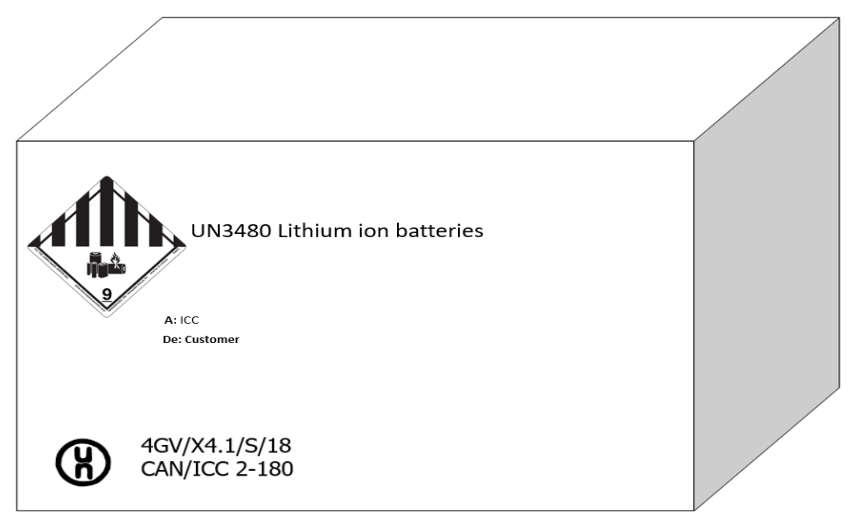
Now when it comes to the shipment of prototype batteries, I strongly recommend reading ICC’s Michael Zendano’s blog.
In conclusion, the basic questions you must be able to answer are:
- Does my battery pass the UN manual test and criteria?
- Is it lithium metal or lithium-ion?
- Is it packed with or contained in equipment or alone?
- Does it meet the low power batteries exception?
Knowing the answers to these questions will steer you in the right direction and prevent shipment delays due to rejections by the carrier. For additional information on Canadian shipment click here.
Stay up to date and sign up for our newsletter!
We have all the products, services and training you need to ensure your staff is properly trained and informed.
 Hazard Class 9 – Lithium Battery Label, Non-Worded, High-Gloss Label, 500/roll |
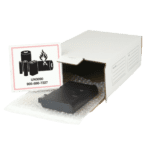 Lithium Battery Shipping Kits |
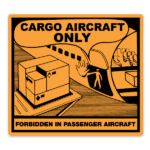 Cargo Transport Only Labels |

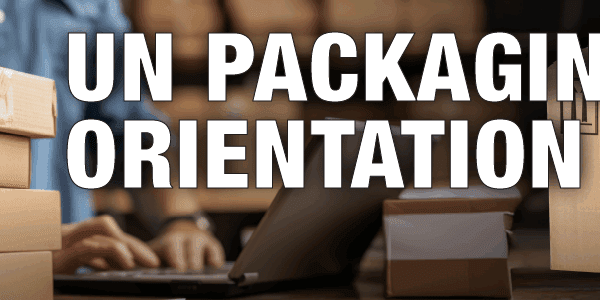
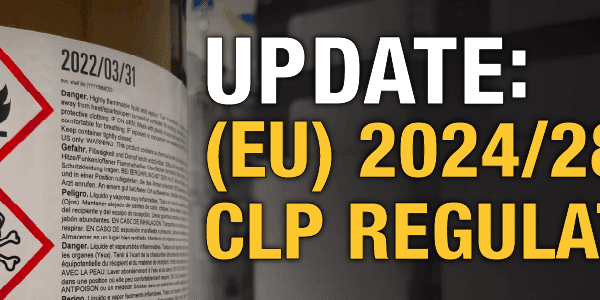
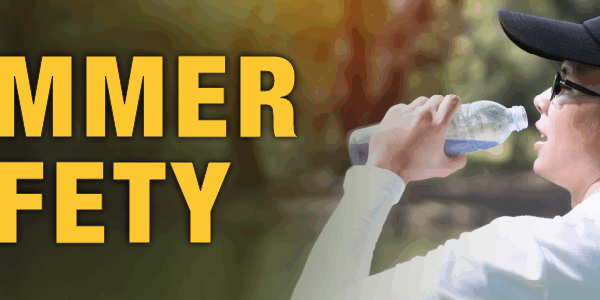


 ICC USA
ICC USA ICC Canada
ICC Canada